
News Directory
- 1. What are Unground Ball Bearings?
- 2. Types of Unground Ball Bearings
- 3. Materials Used in Unground Ball Bearings
- 4. Applications of Unground Ball Bearings
- 5. Advantages and Disadvantages of Using Unground Ball Bearings
- 6. Selecting the Right Unground Ball Bearing
- 7. Installation and Maintenance
- 8. Common Problems and Troubleshooting
- 9. Industry Standards and Specifications
- 10. Future Trends in Unground Ball Bearing Technology
- Conclusion
Unground Ball Bearings: Comprehensive Guide to Types, Applications, and Selection
1. What are Unground Ball Bearings?
1.1 Definition and Basic Function
Unground ball bearings, often referred to as stamped ball bearings or commercial bearings, are a type of rolling-element bearing designed to reduce friction between moving parts. Unlike their precision counterparts, unground bearings are manufactured without the final grinding processes on their raceways and balls. This omission results in a more economical product with looser tolerances.
Despite their less precise nature, unground ball bearings still perform the fundamental function of any bearing: to permit relative motion between two parts, typically rotation, with minimal friction. They achieve this by utilizing a series of spherical balls that roll between an inner and outer ring (or races), allowing smooth movement while supporting radial and, in some cases, axial loads. Their design makes them ideal for applications where extreme precision and high speeds are not critical, but cost-effectiveness and reliable basic performance are paramount.
1.2 Key Differences Between Unground and Precision Ball Bearings
The primary distinctions between unground and precision ball bearings lie in their manufacturing process, resulting in notable differences in performance characteristics, cost, and typical applications. Understanding these differences is crucial for selecting the appropriate bearing for your specific requirements.
|
Feature |
Unground Ball Bearings |
Precision Ball Bearings |
|
Manufacturing |
Stamped or formed components; no final grinding of raceways or balls. |
Ground and honed raceways and balls for extremely tight tolerances and smooth finishes. |
|
Tolerances |
Looser tolerances (e.g., ABEC 1 or unrated) |
Tight tolerances (e.g., ABEC 3, 5, 7, 9) |
|
Precision |
Lower |
High |
|
Cost |
Significantly lower |
Significantly higher |
|
Load Capacity |
Generally lower, suitable for moderate loads |
Higher, designed for heavy and dynamic loads |
|
Speed Ratings |
Lower, suitable for moderate to low speeds |
Higher, suitable for high-speed operation |
|
Noise & Vibration |
Higher potential for noise and vibration |
Very low noise and vibration levels |
|
Applications |
General-purpose, cost-sensitive, moderate precision needs |
High-performance, critical applications requiring extreme accuracy and reliability |
|
Typical Uses |
Casters, conveyors, drawer slides, toys, appliances, agricultural equipment |
Machine tools, aerospace, medical devices, automotive engines, robotics |
2. Types of Unground Ball Bearings
Unground ball bearings come in several configurations, each designed to handle specific types of loads and suit different applications. While they all share the characteristic of unground raceways, their structural variations dictate their optimal use.
2.1 Stamped Ball Bearings
Stamped ball bearings are a common and highly economical type of unground bearing. As their name suggests, their components, particularly the races, are often manufactured through a stamping process, which involves pressing flat sheet metal into the desired shape. This method allows for high-volume production at a very low cost.
-
Features and Benefits
-
Cost-Effectiveness: The primary advantage of stamped ball bearings is their low manufacturing cost. This makes them ideal for applications where budget is a significant concern.
-
Lightweight: Made from relatively thin stamped metal, these bearings are often lighter than other bearing types, which can be beneficial in certain designs.
-
Corrosion Resistance Options: They can be produced from various materials, including stainless steel, to offer good corrosion resistance in damp or challenging environments.
-
Simplicity: Their straightforward design makes them easy to integrate into assemblies.
-
Accommodates Misalignment: Due to their looser tolerances, they can often tolerate minor misalignments better than precision bearings.
-
-
Common Applications Stamped ball bearings are ubiquitous in consumer goods and light industrial equipment where high precision or heavy loads aren't required.
|
Application Category |
Specific Examples |
|
Household Items |
Drawer slides, toy wheels, small appliance mechanisms |
|
Furniture |
Cabinet doors, furniture casters, sliding partitions |
|
Automotive (Non-Critical) |
Seat adjusters, glove box mechanisms, pedal assemblies |
|
Material Handling |
Light-duty conveyors, hand trucks, shopping carts |
|
Agricultural |
Farm implement components (non-load-bearing) |
2.2 Radial Ball Bearings
Radial ball bearings, specifically the unground variety, are designed primarily to support loads that are perpendicular to the bearing's axis of rotation. While they can handle some axial (thrust) loads, their main strength lies in managing radial forces. Their design typically features an inner ring, an outer ring, a set of balls, and often a retainer or cage to space the balls evenly.
-
Design and Load Capacity The design of unground radial ball bearings focuses on accommodating radial forces. The raceway profiles, while not ground, are shaped to allow the balls to roll smoothly under radial loads. Their load capacity is generally moderate, suitable for applications where forces are not extreme and continuous operation at very high speeds isn't necessary. The number and size of the balls, as well as the material strength, determine their specific load ratings.
-
Suitable Applications Unground radial ball bearings are a versatile choice for many general-purpose applications that require rotational support and moderate load handling.
|
Application Category |
Specific Examples |
|
Conveyor Systems |
Idler rollers, package handling systems |
|
Casters and Wheels |
Industrial casters, cart wheels, dolly wheels |
|
Power Tools (Light Duty) |
Drills (non-impact), small saws, sanders |
|
Office Equipment |
Printer rollers, paper feeders |
|
Textile Machinery |
Guide rollers, tensioning devices |
2.3 Thrust Ball Bearings
Thrust ball bearings, unlike radial bearings, are specifically engineered to handle loads that are parallel to the bearing's axis of rotation—i.e., axial loads. They typically consist of two washers (races) with raceways and a set of balls often held in a cage. When an axial force is applied, the balls are pressed between these two washers, allowing for smooth rotational movement under that specific load direction.
-
Axial Load Handling The flat or grooved raceways of thrust ball bearings are optimized for axial forces. They are not designed to carry significant radial loads, and applying radial loads to a thrust bearing can lead to premature failure. Their effectiveness lies in situations where components need to rotate smoothly while being pushed or pulled along their axis.
-
Applications Thrust ball bearings are essential in any mechanism where a rotating component exerts or experiences an axial force.
|
Application Category |
Specific Examples |
|
Turntables |
Lazy Susans, display turntables |
|
Jacks and Lifts |
Screw jacks, scissor lifts (for vertical movement) |
|
Valves |
Manual valve stems (to ease turning under pressure) |
|
Steering Mechanisms |
Automotive steering columns (to reduce friction on axial forces) |
|
Drill Presses |
Spindle mechanisms (to support axial drilling force) |
3. Materials Used in Unground Ball Bearings
The choice of materials for unground ball bearings is a critical factor influencing their performance, durability, and suitability for various environments. Unlike precision bearings that often rely on high-grade alloy steels, unground bearings commonly utilize materials that balance cost-effectiveness with adequate mechanical properties.
3.1 Carbon Steel
Carbon steel is by far the most common material used for unground ball bearings due to its excellent balance of cost, strength, and machinability. The specific type of carbon steel can vary, but generally, it refers to steels where carbon is the primary alloying element.
-
Features and Benefits
-
Cost-Effective: Carbon steel is one of the most affordable metals, making it ideal for mass-produced unground bearings where cost control is paramount.
-
Good Hardness and Strength: When properly heat-treated, carbon steel can achieve sufficient hardness and strength for many moderate-load applications.
-
Wear Resistance: It offers good wear resistance under normal operating conditions.
-
Versatility: It can be easily formed, stamped, and machined into the required bearing components.
-
-
Considerations
-
Corrosion Susceptibility: A significant drawback of standard carbon steel is its susceptibility to rust and corrosion when exposed to moisture or harsh chemicals. This often necessitates protective coatings or platings (e.g., zinc plating) in applications where corrosion is a concern.
-
-
Common Applications Unground carbon steel bearings are found in a vast array of everyday items and light industrial machinery.
|
Application Category |
Specific Examples |
|
Consumer Products |
Casters, drawer slides, garden equipment, toys |
|
Furniture |
Swivel chairs, cabinet doors, rolling carts |
|
Material Handling |
Hand trucks, light conveyor rollers, shopping carts |
|
Automotive (Non-Critical) |
Seat mechanisms, pedal pivots, trunk hinges |
3.2 Stainless Steel
Stainless steel is chosen for unground ball bearings when corrosion resistance is a primary requirement. There are various grades of stainless steel, but those used for bearings typically contain chromium, which forms a passive layer that protects against rust and staining.
-
Features and Benefits
-
Corrosion Resistance: This is the main advantage of stainless steel, making it suitable for applications exposed to moisture, chemicals, or humid environments.
-
Hygienic: Certain grades are ideal for applications in food processing or medical equipment due to their ease of cleaning and resistance to bacterial growth.
-
Temperature Resistance: Stainless steel generally performs well across a wider range of temperatures compared to carbon steel.
-
-
Considerations
-
Higher Cost: Stainless steel is significantly more expensive than carbon steel, impacting the overall cost of the bearing.
-
Lower Hardness (for some grades): While some grades can be hardened, certain stainless steels used in unground bearings may have slightly lower load capacities compared to hardened carbon steel.
-
-
Common Applications Unground stainless steel bearings are essential in environments where standard carbon steel would quickly corrode.
|
Application Category |
Specific Examples |
|
Food Processing |
Conveyors in food production, baking equipment |
|
Marine Environments |
Boat trailers, fishing reels, dock equipment |
|
Medical Equipment |
Hospital beds, laboratory equipment, patient lifts |
|
Outdoor Applications |
Gates, outdoor furniture, garden tools |
|
Washing/Cleaning Equipment |
Dishwashers, commercial laundry machines |
3.3 Other Materials
While carbon steel and stainless steel are the most common, other materials may be used for specific components or in specialized unground bearing applications, often for their unique properties.
-
Plastics (e.g., Acetal, Nylon)
-
Features: Lightweight, corrosion-resistant, often self-lubricating, non-magnetic, and electrically insulating.
-
Considerations: Lower load capacity, lower temperature limits, can deform under continuous load.
-
Applications: Very light-duty conveyors, shower door rollers, some automotive interior components, low-speed applications where quiet operation is desired.
-
-
Brass/Bronze
-
Features: Good corrosion resistance (better than carbon steel), good for self-lubricating properties (especially bronze alloys), non-sparking.
-
Considerations: Softer than steel, lower load capacity, higher cost than carbon steel.
-
Applications: Certain fluid handling equipment, marine applications (less common for balls/races, more for retainers or specialized bushings), spark-free environments.
-
-
Specialty Coatings/Platings
-
Often applied to carbon steel bearings to enhance properties.
-
Zinc Plating: Provides basic corrosion resistance.
-
Nickel Plating: Offers better corrosion resistance and a more aesthetic finish.
-
Black Oxide: Provides a mild level of corrosion resistance and a darker appearance.
-
Applications: Wherever carbon steel is used but a basic level of corrosion protection or a specific aesthetic is required.
-
The selection of material for an unground ball bearing hinges on a careful evaluation of the application's demands, including load, speed, environmental conditions (e.g., moisture, chemicals, temperature), and, critically, the budget.
4. Applications of Unground Ball Bearings
Unground ball bearings, by virtue of their cost-effectiveness and sufficient performance for many non-critical tasks, find widespread use across numerous industries. Their versatility stems from their ability to provide smooth, low-friction rotation in a variety of environments where high precision is not the overriding concern.
4.1 Automotive Industry
In the automotive sector, unground ball bearings are commonly employed in areas where components require smooth movement but aren't subjected to the heavy loads, high speeds, or extreme precision demands of the engine or powertrain. They contribute to passenger comfort and convenience systems.
|
Application Category |
Specific Examples |
|
Interior Components |
Seat adjustment mechanisms, glove box hinges, console slides |
|
Control Systems |
Pedal pivots (accelerator, brake, clutch), linkage points |
|
Accessory Drives |
Wiper blade mechanisms, window regulator assemblies |
|
Body Components |
Trunk lid hinges, hood support pivots, door checks |
4.2 Material Handling Equipment
The material handling industry relies heavily on unground ball bearings for applications that involve moving goods and materials efficiently. Their ability to handle moderate loads and provide consistent performance makes them ideal for conveyor systems and mobile equipment.
|
Application Category |
Specific Examples |
|
Conveyor Systems |
Idler rollers, guide rollers, package sorters |
|
Carts and Dollies |
Wheels for hand trucks, utility carts, shopping carts |
|
Pallet Jacks |
Forklift wheel assemblies (less critical points) |
|
Rack and Storage Systems |
Sliding drawer mechanisms for industrial shelving |
4.3 Furniture and Fixtures
The furniture and fixtures industry benefits significantly from the economical nature of unground ball bearings. They are integral to creating smooth-operating and durable furniture pieces and fixtures for both residential and commercial use.
|
Application Category |
Specific Examples |
|
Drawers and Cabinets |
Drawer slides for desks, dressers, kitchen cabinets |
|
Swivel Mechanisms |
Swivel chairs, bar stools, display turntables |
|
Casters |
Furniture casters for tables, carts, and chairs |
|
Sliding Doors |
Closet sliding doors, room dividers |
4.4 Other Industrial Applications
Beyond these primary sectors, unground ball bearings are found in a diverse range of other industrial applications where their characteristics offer a suitable and cost-effective solution.
|
Application Category |
Specific Examples |
|
Agricultural Equipment |
Seed planters, small farm implement components, gate hinges |
|
Fitness Equipment |
Treadmill rollers, elliptical machine pivots, weight stack guides |
|
Lawn and Garden |
Lawn mower wheels, garden cart axles, trimmer heads |
|
Consumer Appliances |
Washing machine drum supports (some models), fan motors |
|
Recreational Equipment |
Bicycle wheel hubs (economy models), skateboard wheels, roller skates |
|
Toys and Games |
Remote control cars, children's riding toys, board game spinners |
5. Advantages and Disadvantages of Using Unground Ball Bearings
When considering unground ball bearings for an application, it's crucial to weigh their benefits against their limitations. Their unique manufacturing process directly influences their performance characteristics, making them suitable for certain scenarios while unsuitable for others.
5.1 Cost-Effectiveness
The most significant advantage of unground ball bearings is their cost-effectiveness. This stems directly from their simplified manufacturing process, which bypasses the intricate and time-consuming grinding and honing operations required for precision bearings.
-
Manufacturing Efficiency: Production involves methods like stamping, rolling, and basic machining, which are less labor-intensive and require less specialized equipment compared to the precision grinding of raceways and balls. This leads to higher production volumes at a lower unit cost.
-
Material Selection: They often utilize more economical grades of carbon steel, further reducing material expenses.
-
Reduced Overall Project Cost: For many applications, the lower cost of unground bearings can significantly reduce the overall budget of a product or system, making them an attractive option for mass-produced consumer goods and light industrial equipment.
This cost advantage makes them the go-to choice when budget constraints are tight and the application doesn't demand extreme performance.
5.2 Load Capacity and Speed Limitations
While cost-effective, unground ball bearings come with inherent limitations in load capacity and speed. These limitations are a direct consequence of their unground surfaces and looser tolerances.
-
Lower Load Capacity:
-
Surface Finish: The unground raceways and balls have rougher surfaces. This leads to higher contact stresses and less efficient load distribution compared to the smooth, precisely conforming surfaces of precision bearings.
-
Material Hardness: While carbon steel can be hardened, the overall design and less precise geometry mean they are not designed to withstand very heavy or shock loads. They are generally suited for moderate to light loads.
-
-
Lower Speed Limitations:
-
Increased Friction and Heat: The rougher surfaces and looser internal clearances result in higher rolling friction. At elevated speeds, this friction generates more heat, which can lead to premature wear, lubricant degradation, and even bearing failure.
-
Vibration and Noise: Looser tolerances also mean greater potential for run-out and imbalance at higher speeds, leading to increased vibration and noise. This restricts their use in applications requiring quiet or smooth high-speed operation.
-
|
Feature |
Unground Ball Bearings |
Precision Ball Bearings |
|
Load Handling |
Suitable for light to moderate radial and axial loads. |
Designed for heavy, dynamic, and complex radial/axial loads. |
|
Operating Speed |
Limited to low to moderate speeds. |
Capable of very high operating speeds. |
|
Heat Generation |
Higher friction leads to more heat generation at speed. |
Lower friction results in less heat, even at high speeds. |
|
Vibration/Noise |
Prone to higher levels of vibration and noise, especially at higher RPMs. |
Very low vibration and noise levels, even at high RPMs. |
5.3 Tolerances and Precision
The defining characteristic of unground ball bearings is their looser tolerances and lower precision compared to precision bearings. This directly impacts their rotational accuracy, run-out, and overall smooth operation.
-
Looser Tolerances:
-
The manufacturing process for unground bearings does not include the fine grinding and superfinishing steps that create highly accurate dimensions and forms. This means there are wider permissible variations in parameters like bore diameter, outer diameter, width, and run-out.
-
This lack of tight control means that individual bearings within a batch may show greater variation in performance.
-
-
Lower Rotational Accuracy:
-
The unground raceways mean that the ball path is not as perfectly smooth or consistent. This can lead to small irregularities in rotation, affecting the precision of any component mounted on the bearing.
-
They typically have higher radial and axial run-out, meaning the rotating shaft or component may wobble slightly.
-
|
Feature |
Unground Ball Bearings |
Precision Ball Bearings |
|
Dimensional Accuracy |
Looser dimensions (e.g., ABEC 1 or unrated) |
Extremely tight dimensions (e.g., ABEC 3, 5, 7, 9) |
|
Run-Out |
Higher radial and axial run-out (more wobble or eccentricity). |
Very low run-out, ensuring smooth and accurate rotation. |
|
Positional Accuracy |
Less precise positioning of rotating components. |
Highly precise positioning, critical for exact movements. |
|
Surface Finish |
Relatively rougher raceway and ball surfaces. |
Mirror-like finish on raceways and balls. |
6. Selecting the Right Unground Ball Bearing
Choosing the correct unground ball bearing for a given application is crucial for optimal performance, longevity, and cost-effectiveness. While these bearings are generally more forgiving due to their looser tolerances, a careful evaluation of the application's specific requirements is still essential. Key factors to consider include the type of load, operating speed, environmental conditions, and available space.
6.1 Load Requirements
Understanding the nature and magnitude of the load is paramount in bearing selection. Unground ball bearings are best suited for light to moderate loads.
-
Radial Load: This is a force acting perpendicular to the bearing's axis of rotation. Most unground ball bearings are designed to handle primary radial loads.
-
Axial (Thrust) Load: This is a force acting parallel to the bearing's axis of rotation. Some unground bearings, specifically unground thrust ball bearings, are designed to handle axial loads, while others can only accommodate light axial loads in conjunction with radial loads.
-
Combined Load: A combination of both radial and axial forces. If significant combined loads are present, careful consideration or perhaps a different bearing type might be necessary.
-
Shock Loads: Sudden, high-impact forces. Unground bearings are generally not recommended for applications with significant shock loads due to their construction and material properties.
|
Load Type |
Unground Radial Ball Bearing Suitability |
Unground Thrust Ball Bearing Suitability |
|
Radial Load |
Primary focus; good for light to moderate |
Poor; not designed for radial loads |
|
Axial Load |
Limited; only light axial loads |
Primary focus; good for moderate loads |
|
Combined Load |
Limited; generally avoid significant combined loads |
Not suitable for combined loads |
|
Shock Load |
Generally poor; avoid |
Generally poor; avoid |
6.2 Speed and Operating Conditions
The rotational speed and the duration of operation significantly influence bearing life and performance. Unground ball bearings are designed for low to moderate speeds.
-
Operating Speed (RPM): Higher speeds generate more heat due to increased friction from the unground surfaces. This can lead to premature wear and lubricant degradation. Exceeding recommended speed limits will drastically reduce bearing life.
-
Duty Cycle: Whether the bearing operates continuously or intermittently impacts heat buildup and fatigue. Intermittent operation allows for cooling.
-
Smoothness and Noise: For applications requiring very quiet operation or high rotational smoothness (e.g., precision instruments), unground bearings may not be suitable due to their inherent vibration and noise characteristics at higher speeds.
|
Condition |
Unground Ball Bearing Consideration |
|
Low Speed |
Excellent choice; cost-effective and performs well |
|
Moderate Speed |
Acceptable, but monitor for heat buildup and noise |
|
High Speed |
Generally not recommended; leads to premature wear and failure |
|
Continuous Operation |
Requires careful consideration of lubrication and heat dissipation |
|
Intermittent Operation |
More forgiving; allows for cooling during downtime |
6.3 Environmental Factors
The environment in which the bearing operates plays a crucial role in material selection and sealing options.
-
Temperature: Extreme temperatures (both high and low) can affect lubricant viscosity, material properties, and dimensional stability. Standard unground bearings are suitable for ambient temperatures, but special lubricants or materials might be needed for extremes.
-
Moisture/Humidity: Exposure to water or high humidity can lead to corrosion, especially for carbon steel bearings. Stainless steel bearings are the preferred choice in such environments.
-
Contaminants: Dust, dirt, debris, and chemicals can severely reduce bearing life by causing abrasive wear or corrosion. While unground bearings often operate in less controlled environments, protection through seals or proper enclosure is still beneficial.
-
Corrosive Chemicals: Specific chemical exposure necessitates highly resistant materials like certain grades of stainless steel or plastic, depending on the chemical's nature.
6.4 Size and Space Constraints
The physical dimensions of the bearing must fit within the available space of the application.
-
Bore Diameter (ID): The inner diameter that fits onto the shaft.
-
Outer Diameter (OD): The outer diameter that fits into the housing.
-
Width: The axial dimension of the bearing.
Manufacturers provide detailed dimension charts for various unground bearing types. It is crucial to match these dimensions precisely to the design requirements. Unlike precision bearings where slight misfits can be compensated with precise machining, unground bearings generally require more straightforward, less precise housing and shaft fits. However, a proper fit is still necessary to prevent rotation of the outer ring in its housing or the inner ring on the shaft, which can lead to rapid wear.
7. Installation and Maintenance
Proper installation and consistent maintenance are crucial for maximizing the lifespan and performance of unground ball bearings, even though they are generally more forgiving than their precision counterparts. Neglecting these aspects can lead to premature failure, increased noise, and reduced efficiency.
7.1 Proper Installation Techniques
While unground bearings don't demand the same level of sterile environment or hydraulic pressing as precision bearings, correct installation practices are still vital to prevent damage and ensure proper function.
-
Cleanliness is Key: Even with unground bearings, dust, dirt, and debris are the enemies. Ensure shafts, housings, and the bearings themselves are clean before installation. Contaminants can cause abrasive wear, leading to early failure.
-
Use Appropriate Tools:
-
Avoid Direct Hammering: Never strike the bearing rings directly with a hammer. This can cause brinelling (denting) of the raceways or deformation of the rings, leading to noise and reduced life.
-
Use a Press or Sleeve: For press-fit applications, use a bearing installation tool or a soft metal sleeve (like aluminum or brass) that applies force evenly to the ring being pressed. If pressing onto a shaft, apply force to the inner ring. If pressing into a housing, apply force to the outer ring.
-
-
Check for Proper Alignment: While unground bearings tolerate some misalignment, excessive misalignment can still lead to uneven load distribution, increased friction, and premature wear. Ensure the shaft and housing bores are reasonably concentric and aligned.
-
Shaft and Housing Fits: Unground bearings typically use looser fits than precision bearings. However, ensure the fit is snug enough to prevent the inner ring from rotating on the shaft or the outer ring from rotating in the housing, as this can cause fretting corrosion and rapid wear.
|
Installation Do's |
Installation Don'ts |
|
Always ensure clean surfaces. |
Never hammer directly on bearing rings. |
|
Use a press or proper mounting tools. |
Don't apply force to the wrong ring during installation. |
|
Verify reasonable alignment. |
Avoid forcing the bearing if it doesn't slide easily. |
|
Confirm correct shaft and housing fits. |
Don't use damaged or deformed bearings. |
7.2 Lubrication Requirements
Lubrication is essential for reducing friction, minimizing wear, and dissipating heat within the bearing. Even for unground bearings, appropriate lubrication can significantly extend their operational life.
-
Grease vs. Oil:
-
Grease: Most common for unground ball bearings, especially those with seals or shields. Grease provides continuous lubrication, is easy to apply, and offers some sealing against contaminants.
-
Oil: Less common for unground bearings due to the need for a containment system, but can be used in some open applications or when more effective heat dissipation is required.
-
-
Lubricant Type:
-
For general purpose applications, a good quality lithium-based grease is often sufficient.
-
Consider specific lubricants for extreme temperatures, high moisture environments, or food-grade applications.
-
-
Fill Level: Bearings should be filled to an appropriate level (typically 30-50% for grease-lubricated bearings). Overfilling can lead to excessive heat generation, especially at higher speeds.
-
Re-lubrication Intervals: Depending on the application, speed, temperature, and environment, re-lubrication may be necessary. For sealed or shielded unground bearings, they are often considered "lubricated for life" in light-duty applications. For open bearings or more demanding uses, periodic re-lubrication will be required.
|
Lubrication Type |
Advantages |
Disadvantages |
|
Grease |
Easy to apply, good sealing, long service life |
Less effective for heat dissipation, speed limitations |
|
Oil |
Better heat dissipation, higher speed capability |
Requires containment system, more frequent checks |
7.3 Maintenance Tips for Longevity
Proactive maintenance can prevent many common bearing failures and extend the service life of unground ball bearings.
-
Regular Inspections: Periodically check bearings for signs of wear, noise, excessive heat, or contamination. Early detection of issues can prevent more significant problems.
-
Cleanliness: Maintain a clean operating environment. Keep the area around the bearing free from dust, dirt, and moisture.
-
Sealing Integrity: If the bearing has seals or shields, periodically check their condition. Damaged seals can allow contaminants in and lubricant out.
-
Lubricant Condition: For open bearings or those requiring re-lubrication, check the condition of the lubricant. Discolored, hardened, or contaminated grease indicates a need for re-lubrication or replacement.
-
Addressing Noise/Vibration: Unusual noises or vibrations are often early indicators of a problem. Investigate the cause promptly to avoid bearing failure.
-
Proper Storage: Store spare bearings in their original packaging in a dry, clean environment to prevent rust and contamination before installation.
By adhering to these installation and maintenance guidelines, you can ensure that unground ball bearings deliver their expected performance and lifetime, providing a reliable and cost-effective solution for your applications.
8. Common Problems and Troubleshooting
Even with proper selection and installation, unground ball bearings can experience issues. Understanding common problems, their causes, and basic troubleshooting steps can help prevent premature failure, reduce downtime, and extend bearing life.
8.1 Noise and Vibration
Noise and vibration are often the earliest and most common indicators of a problem with unground ball bearings. While unground bearings are inherently louder than precision bearings, excessive or unusual sounds warrant investigation.
-
Causes of Noise and Vibration:
-
Contamination: Dirt, dust, or foreign particles inside the bearing can cause grinding or rattling noises.
-
Insufficient Lubrication: Lack of adequate lubricant leads to increased friction, which generates heat, noise, and accelerated wear. A squealing or squeaking sound often points to this issue.
-
Over-lubrication: While less common than under-lubrication, too much grease can cause excessive drag and generate heat, leading to noise.
-
Misalignment: If the shaft or housing is not properly aligned, it can put uneven stress on the bearing, resulting in a humming or vibrating sound.
-
Overload: Exceeding the bearing's rated load capacity can deform the raceways or balls, leading to a rumbling noise.
-
Wear: As the bearing components wear down, clearances increase, and surfaces become rough, leading to increased noise and vibration over time.
-
Improper Fit: A bearing that is too loose or too tight on the shaft or in the housing can cause movement, leading to noise and wear.
-
Damaged Components: Brinelling (denting), spalling (flaking), or cracked rings/balls will produce distinct clicking, clunking, or grinding sounds.
-
-
Troubleshooting Steps:
|
Symptom |
Possible Cause |
Troubleshooting/Solution |
|
Grinding/Rattling |
Contamination |
Clean the surrounding area; inspect/replace bearing if contaminated. |
|
Squealing/Squeaking |
Insufficient lubrication |
Re-lubricate with appropriate grease/oil. |
|
Humming/Vibration |
Misalignment; improper fit |
Check shaft/housing alignment; verify fits; reinstall correctly. |
|
Rumbling |
Overload; general wear |
Check application load; consider larger/different bearing; replace worn bearing. |
|
Clicking/Clunking |
Damaged components (brinelling, cracks) |
Replace the bearing immediately. |
8.2 Premature Wear
Premature wear refers to the degradation of bearing components at a rate faster than their expected lifespan. This can manifest as rough surfaces, increased play, and ultimately, bearing failure.
-
Causes of Premature Wear:
-
Contamination: Abrasive particles (dirt, grit, metal chips) entering the bearing are a leading cause of wear, acting like sandpaper on the raceways and balls.
-
Insufficient Lubrication: Without a proper lubricant film, metal-to-metal contact occurs, leading to high friction, heat, and rapid surface fatigue and wear.
-
Excessive Load: Overloading causes excessive stress on the contact surfaces, accelerating fatigue and wear.
-
High Speed: Operating unground bearings at speeds beyond their design limits generates excessive heat and friction, leading to rapid wear.
-
Corrosion: Rust and corrosion on the raceways and balls create rough surfaces, significantly increasing wear.
-
Improper Installation: Forcing the bearing, or using incorrect fits, can deform components and lead to localized stress and wear.
-
Vibration (False Brinelling): If a bearing is subjected to constant small vibrations while stationary, it can cause wear marks resembling brinelling, known as false brinelling.
-
-
Troubleshooting Steps:
|
Symptom |
Possible Cause |
Troubleshooting/Solution |
|
Rough surfaces/Play |
Contamination; insufficient lubrication; corrosion |
Inspect for dirt/rust; clean; re-lubricate; consider seals; replace if severe. |
|
Discolored surfaces |
Overheating (from excessive load/speed/friction) |
Verify load/speed are within limits; check lubrication; improve ventilation. |
|
Indentations (brinelling) |
Shock loads; improper installation |
Reduce impact; use proper installation tools; ensure correct fit. |
|
Flaking/Spalling |
Fatigue from overload or long service |
Replace bearing; re-evaluate load requirements if recurring. |
8.3 Contamination Issues
Contamination is arguably the most common enemy of any ball bearing, and unground bearings are no exception. Even small particles can significantly reduce bearing life.
-
Sources of Contamination:
-
Environmental: Dust, dirt, moisture, sand, and debris from the surrounding environment.
-
Installation: Particles introduced during mounting due to unclean tools, hands, or work surfaces.
-
Lubricant: Contaminated grease or oil, or using an open container of lubricant where dirt can enter.
-
Internal: Wear particles from the bearing itself or from other machine components.
-
External Processes: Metal chips from machining, paint overspray, or chemicals from cleaning agents.
-
-
Impact of Contamination:
-
Abrasive Wear: Hard particles grind away at the raceways and balls.
-
Corrosion: Moisture and corrosive chemicals lead to rust and material degradation.
-
Lubricant Degradation: Contaminants can break down the lubricant, reducing its effectiveness.
-
Increased Noise and Vibration: As particles interfere with smooth rolling, noise and vibration increase.
-
Premature Failure: All the above lead to a significantly shortened lifespan for the bearing.
-
-
Preventing Contamination:
|
Prevention Method |
Description |
|
Use Seals/Shields |
Choose bearings with integrated seals (2RS) or shields (2Z) where possible. |
|
Maintain Cleanliness |
Ensure a clean work environment during installation and maintenance. |
|
Proper Storage |
Store bearings in their original, sealed packaging until ready for use. |
|
Clean Lubricants |
Use clean dispensing tools for grease/oil; store lubricants in sealed containers. |
|
Enclosures/Guards |
Protect the bearing area with housing enclosures or splash guards. |
|
Regular Cleaning |
Periodically clean the exterior of the bearing and surrounding machine parts. |
9. Industry Standards and Specifications
While unground ball bearings are known for their less stringent precision requirements, they are not entirely unregulated. Various industry standards and specifications exist to ensure a baseline level of quality, interchangeability, and performance. Understanding these standards is important for manufacturers and users to ensure product reliability and compatibility.
9.1 Overview of Relevant Standards
Unlike precision bearings which adhere strictly to organizations like ABEC (Annular Bearing Engineering Committee) or ISO (International Organization for Standardization) for their high precision ratings, unground bearings typically operate under broader industry guidelines or in-house specifications.
-
Internal or Manufacturer-Specific Standards: Many unground bearing manufacturers develop their own internal quality control standards that govern dimensions, material composition, and performance expectations. These are often based on their experience and the specific requirements of their customer base.
-
Commercial Grade Designations: Instead of precision ratings (like ABEC 1, 3, 5, etc.), unground bearings might be referred to simply as "commercial grade," "stamped bearings," or "unground," indicating they meet less rigorous specifications.
-
Dimensional Standards (General): While not as strictly regulated as precision bearings, general dimensional standards (e.g., for bore and outer diameter) still apply to ensure some level of interchangeability for common sizes. These might refer to broader industrial component standards rather than specific bearing-only standards.
-
Material Standards: The materials used (e.g., carbon steel, stainless steel) will conform to common metallurgical standards (e.g., ASTM, AISI in the US, EN standards in Europe) regarding their chemical composition and mechanical properties. This ensures the raw material itself meets a certain quality level.
-
Surface Finish Considerations: While not ground, there might be internal standards for the maximum allowable surface roughness (Ra value) to ensure a functional, albeit unground, raceway.
|
Standard Type |
Focus Area |
Typical Application to Unground Bearings |
|
Manufacturer Standards |
Internal quality control, specific performance criteria |
Primary driver for unground bearing quality and consistency. |
|
Commercial Grade Designations |
General classification for less precise bearings |
Indicates suitability for non-critical, cost-sensitive applications. |
|
General Dimensional Standards |
Basic measurements for common sizes |
Ensures basic fit and interchangeability. |
|
Material Composition Standards |
Chemical makeup and properties of raw materials |
Guarantees the quality of the steel or other materials used. |
9.2 Compliance and Certification
For unground ball bearings, compliance and certification often differ significantly from precision bearings. Formal certifications are less common, but adherence to certain principles and customer-specific requirements is key.
-
Less Formal Certification: Unground bearings are rarely subject to stringent third-party certification bodies like ISO 9001 for design and manufacturing processes, or specific performance certifications like ABEC. Their market segment prioritizes cost over such formal endorsements.
-
Customer Specifications: Most commonly, compliance for unground bearings is driven by customer specifications. Large OEM (Original Equipment Manufacturer) customers will often provide their own detailed requirements for dimensions, materials, load capacity, and lifespan tests, which the bearing manufacturer must meet.
-
Quality Assurance (QA) Processes: Reputable manufacturers of unground bearings will still have robust internal Quality Assurance (QA) processes. These include:
-
Incoming Material Inspection: Verifying raw materials meet specifications.
-
In-process Checks: Monitoring dimensions and process parameters during manufacturing.
-
Final Product Inspection: Checking finished bearings for defects, critical dimensions, and sometimes basic functional tests (e.g., noise, smoothness).
-
-
Traceability: While not always as strict as for aerospace or medical-grade components, manufacturers may offer some level of material or batch traceability to aid in quality control and recall if necessary.
-
Environmental and Safety Standards: Compliance with broader environmental regulations (e.g., RoHS for hazardous substances) or safety standards relevant to the end product where the bearing is used may also apply.
|
Aspect |
Unground Bearings' Approach to Compliance & Certification |
|
Third-Party Certifications |
Generally not applicable (e.g., no ABEC ratings) |
|
Customer-Driven Compliance |
Primary method of quality assurance and specification adherence |
|
Internal QA Processes |
Essential for reputable manufacturers to ensure product consistency |
|
Material Traceability |
May be available upon request for quality control |
|
Environmental/Safety |
Compliance with broader regulations relevant to the end product |
10. Future Trends in Unground Ball Bearing Technology
The unground ball bearing market, while rooted in cost-effectiveness and simplicity, isn't stagnant. Continuous innovation, driven by new material science, manufacturing advancements, and evolving application demands, is shaping its future. These trends aim to enhance performance, expand application scope, and further optimize production.
10.1 Material Innovations
While carbon steel and stainless steel will remain core materials, advancements in metallurgy and the exploration of new compounds are set to improve the capabilities of unground bearings.
-
Advanced Steel Alloys: Research continues into steel alloys that offer improved properties without significantly increasing cost. This includes steels with enhanced hardenability for better wear resistance, or those with inherent corrosion resistance that can rival some stainless steels but at a lower price point. The goal is to get more performance from the base material.
-
Polymer and Composite Materials: The use of high-performance plastics and composite materials for bearing components (especially cages or even entire bearing structures for very light loads) is growing. These materials offer benefits like:
-
Reduced Weight: Crucial for applications where weight is a factor.
-
Self-Lubrication: Some polymers have inherent lubricating properties, reducing or eliminating the need for external grease.
-
Corrosion Resistance: Excellent resistance to many chemicals and moisture.
-
Noise Reduction: Polymers tend to dampen noise and vibration more effectively than metal.
-
Non-Magnetic Properties: Important for specific electronic or medical applications.
-
-
Surface Treatments and Coatings: Beyond traditional plating, advanced surface treatments (e.g., specialized nitriding, carbon-based coatings) are being explored. These can significantly enhance surface hardness, wear resistance, and even provide dry lubrication, extending the life of carbon steel bearings in challenging environments without resorting to more expensive base materials.
|
Material Innovation |
Key Benefit for Unground Bearings |
Potential Applications |
|
Advanced Steel Alloys |
Improved wear resistance, enhanced strength |
More demanding material handling, some automotive uses |
|
High-Performance Polymers |
Lightweight, self-lubricating, corrosion-resistant |
Appliance mechanisms, quiet furniture slides, consumer electronics |
|
Specialty Surface Coatings |
Enhanced hardness, dry lubrication, improved corrosion |
Outdoor equipment, specific industrial machinery |
10.2 Design Improvements
Incremental but impactful design improvements are continuously being made to optimize the functionality and manufacturing efficiency of unground bearings.
-
Optimized Raceway Geometries: Even without grinding, subtle changes in the stamping or forming dies can lead to more optimized raceway profiles. This can improve load distribution, reduce friction, and potentially increase the life of the bearing within its unground performance envelope. The focus is on achieving the best possible rolling characteristics given the manufacturing constraints.
-
Improved Sealing Solutions: While basic shields and seals are common, there's a trend towards more effective and durable sealing solutions that can be integrated cost-effectively into unground bearing designs. Better seals mean enhanced protection against contaminants and improved lubricant retention, leading to longer service life, especially in dirtier environments.
-
Integrated Functions: Future designs might see unground bearings incorporating more integrated functions. This could include bearings with built-in mounting features, specialized flanges, or components that simplify assembly into a larger system, reducing the need for additional parts and assembly steps.
-
Modular Designs: The development of more modular unground bearing components could allow for greater customization and easier assembly, catering to diverse application needs with standardized components.
|
Design Improvement |
Impact on Unground Bearings |
Benefit to Applications |
|
Optimized Raceways |
Smoother rolling, better load distribution |
Increased efficiency, potentially longer life |
|
Enhanced Seals |
Better protection from contaminants, lubricant retention |
Extended life in harsh environments, reduced maintenance |
|
Integrated Features |
Simplified assembly, reduced part count |
Lower overall product cost, faster production |
10.3 Application Expansion
As material and design innovations progress, the scope of applications for unground ball bearings is expected to expand. This expansion will likely occur in areas where their existing advantages can be leveraged, or where slight performance improvements open up new possibilities.
-
Emerging Economies: As manufacturing matures in emerging economies, the demand for cost-effective, reliable components like unground bearings will continue to grow across various industries.
-
Increased Use in "Smart" Devices: With the proliferation of consumer electronics and smart home devices, many internal mechanisms require low-cost, low-friction rotational support. Unground bearings, especially those with plastic or composite components, are well-suited for these applications.
-
Growth in Renewable Energy (Light Duty): Certain light-duty components within renewable energy systems (e.g., tracking mechanisms for small solar panels, parts in compact wind turbines) might find a use for robust, economical unground bearings.
-
Automated Consumer Products: The increasing automation in consumer appliances and personal devices will create a demand for reliable, inexpensive bearings that can handle repetitive motion in non-critical roles.
-
Niche Industrial Applications: Continuous refinement will enable unground bearings to enter more niche industrial applications where their cost advantage, combined with modest performance improvements, makes them a viable alternative to more expensive precision bearings.
|
Application Expansion Area |
Driving Factors |
Example Uses |
|
Smart Consumer Devices |
Cost, compactness, need for smooth, quiet motion |
Robot vacuum cleaners, smart appliance mechanisms |
|
Light Automation |
Budget constraints, moderate load/speed requirements |
Small assembly line components, automated sorting systems |
|
Green Technology (Light) |
Cost-effectiveness for non-critical rotating parts |
Solar panel actuators, small-scale wind turbine pitch mechanisms |
|
DIY & Hobbyist Markets |
Accessibility, ease of use, low cost |
3D printers, custom robotics, home workshop equipment |
Conclusion
Unground ball bearings represent a crucial segment of the bearing industry, offering a cost-effective and reliable solution for a vast array of applications where extreme precision, high speeds, or heavy loads are not the primary requirements. Throughout this guide, we've explored their fundamental nature, diverse types, material considerations, widespread applications, and essential selection and maintenance practices.
Recap of Key Points
We began by defining unground ball bearings as those manufactured without the final grinding processes, distinguishing them from their precision counterparts by their looser tolerances and lower cost. We then delved into the specific types: stamped ball bearings, known for their ultimate economy; radial ball bearings, designed primarily for perpendicular forces; and thrust ball bearings, engineered to handle axial loads.
Our discussion on materials highlighted carbon steel as the most common and cost-effective choice, with stainless steel providing crucial corrosion resistance for demanding environments. We also touched upon other specialized materials like plastics and various coatings.
The extensive applications of unground bearings span industries such as automotive (for non-critical components), material handling, furniture and fixtures, and a myriad of other industrial and consumer products, demonstrating their versatility.
We then thoroughly examined the advantages and disadvantages, emphasizing their unparalleled cost-effectiveness balanced against their limitations in load capacity, speed, and precision. Proper selection hinges on carefully evaluating load requirements, operating speeds, environmental conditions, and size constraints. Finally, we underscored the importance of proper installation and maintenance, including lubrication and contamination control, to ensure longevity and optimal performance. Troubleshooting common issues like noise, vibration, and premature wear is also vital.
Final Thoughts on Unground Ball Bearings
Unground ball bearings are not merely a compromise; they are an optimized engineering solution for a significant portion of mechanical systems. Their continued relevance is a testament to their ability to deliver sufficient performance at an attractive price point. As industries evolve and new technologies emerge, we can anticipate further innovations in materials and designs that will enhance their capabilities and expand their application into even more diverse areas, particularly in automated and smart devices where cost and efficiency are paramount.
For manufacturers and engineers, understanding the unique characteristics and appropriate use of unground ball bearings is key to designing efficient, reliable, and economically viable products. By making informed choices, these seemingly simple components can contribute significantly to the success and functionality of countless mechanical systems worldwide.



 English
English 中文简体
中文简体 عربى
عربى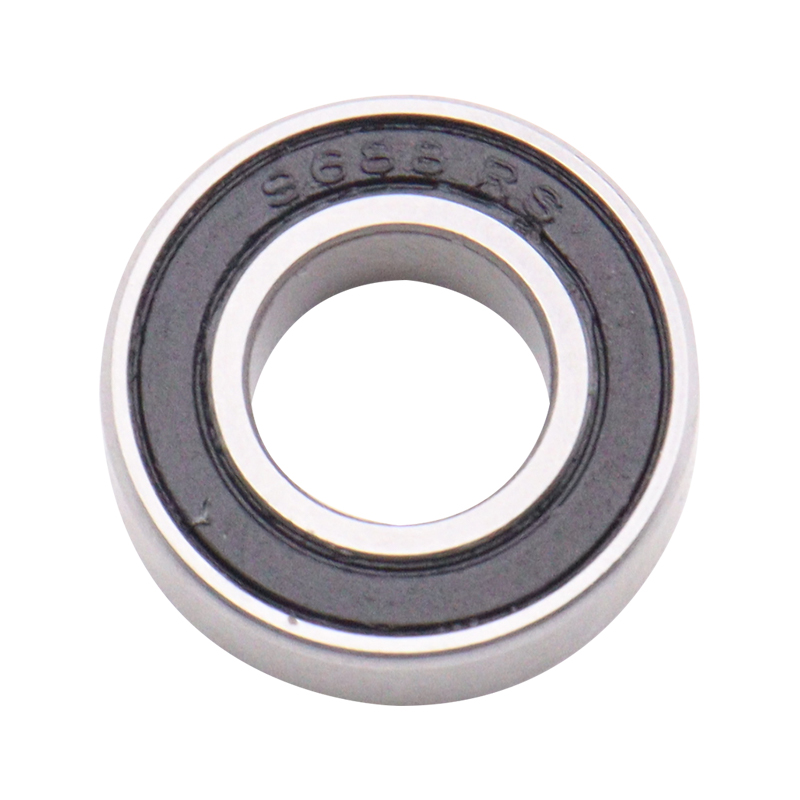
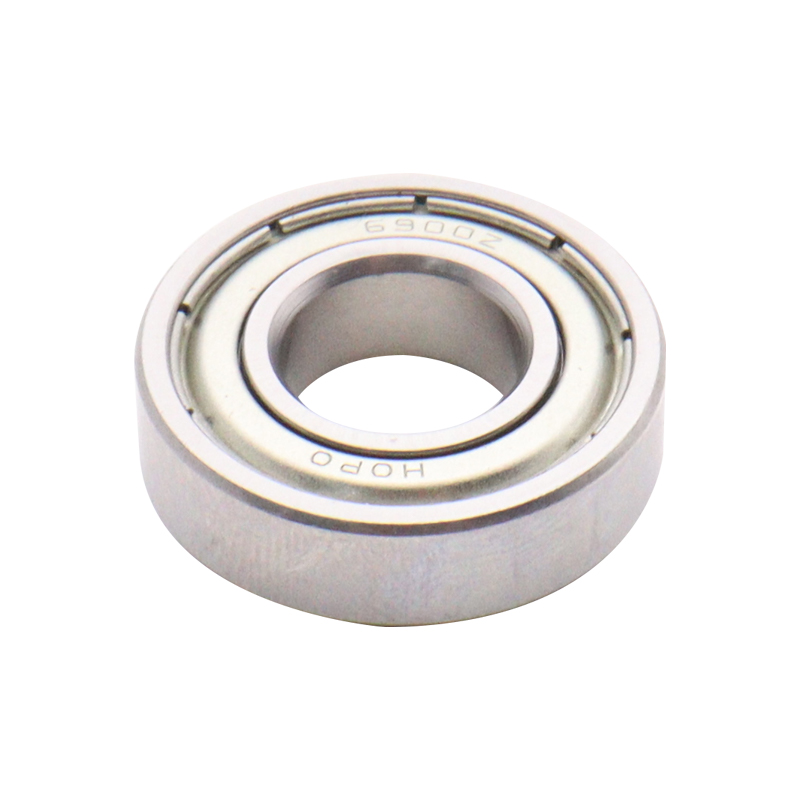

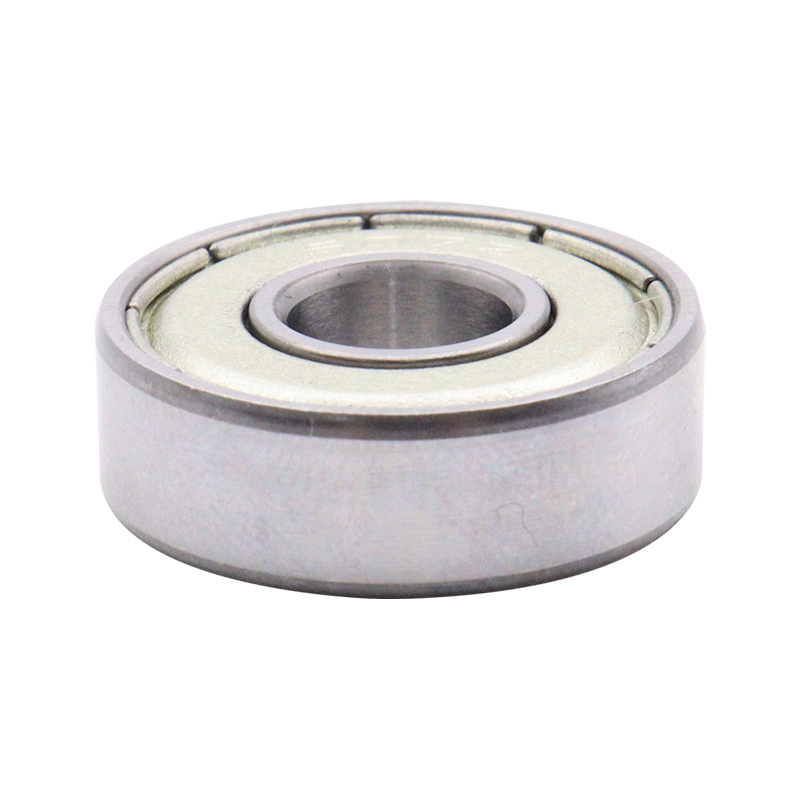
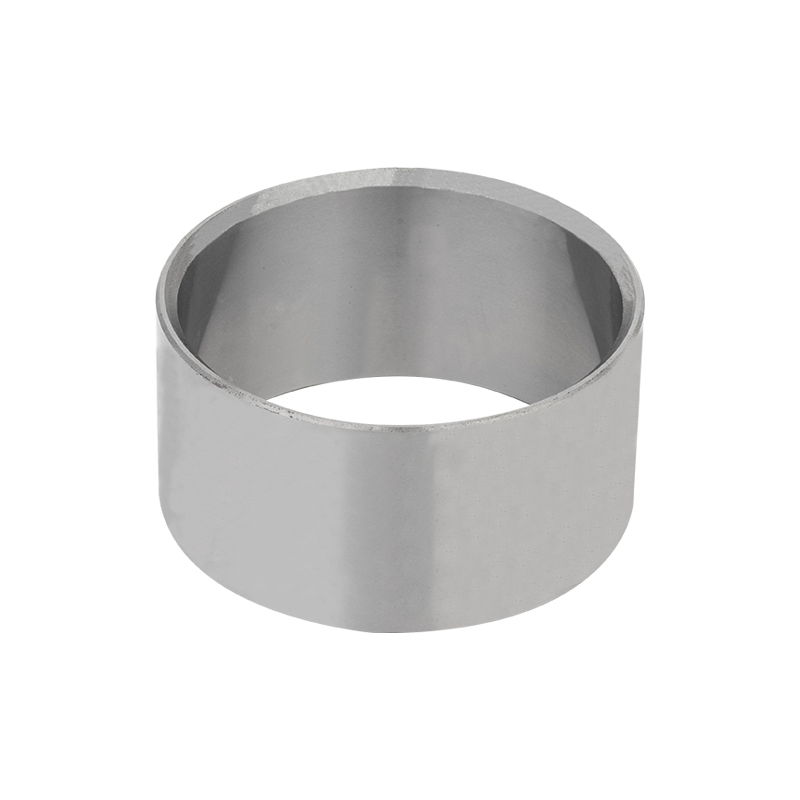
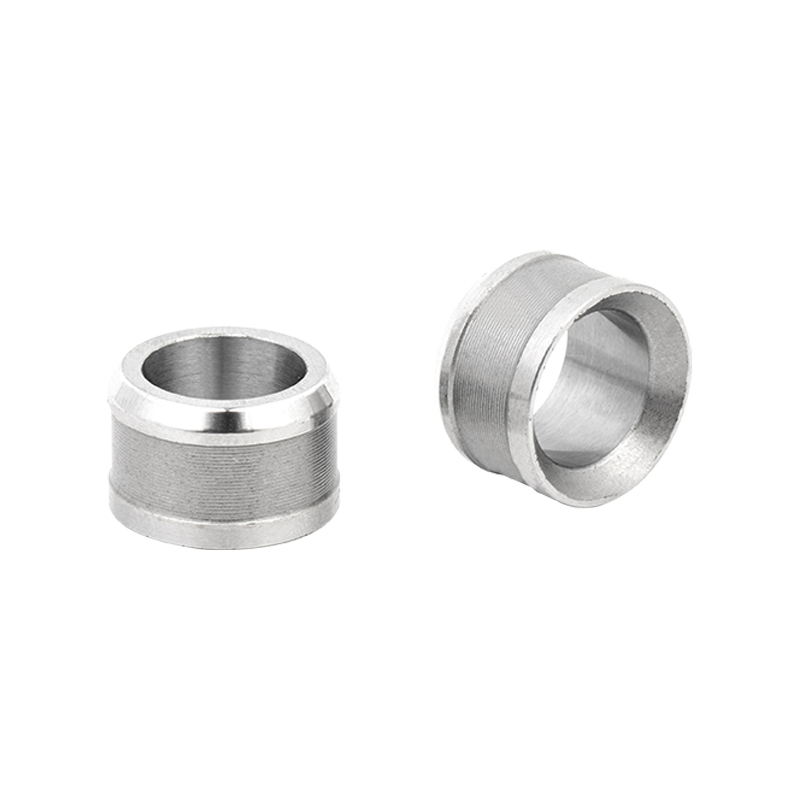
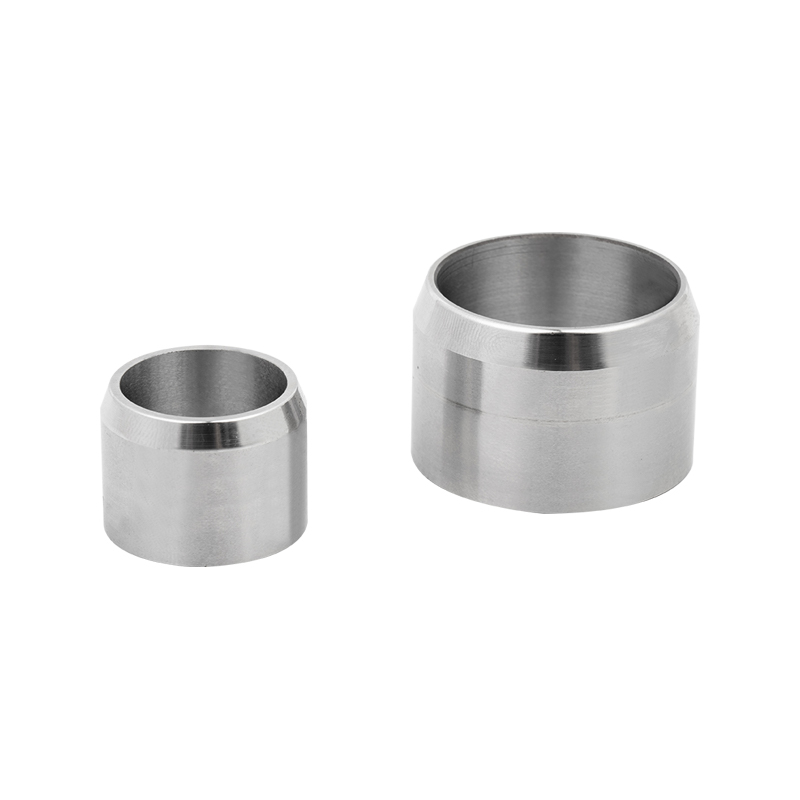
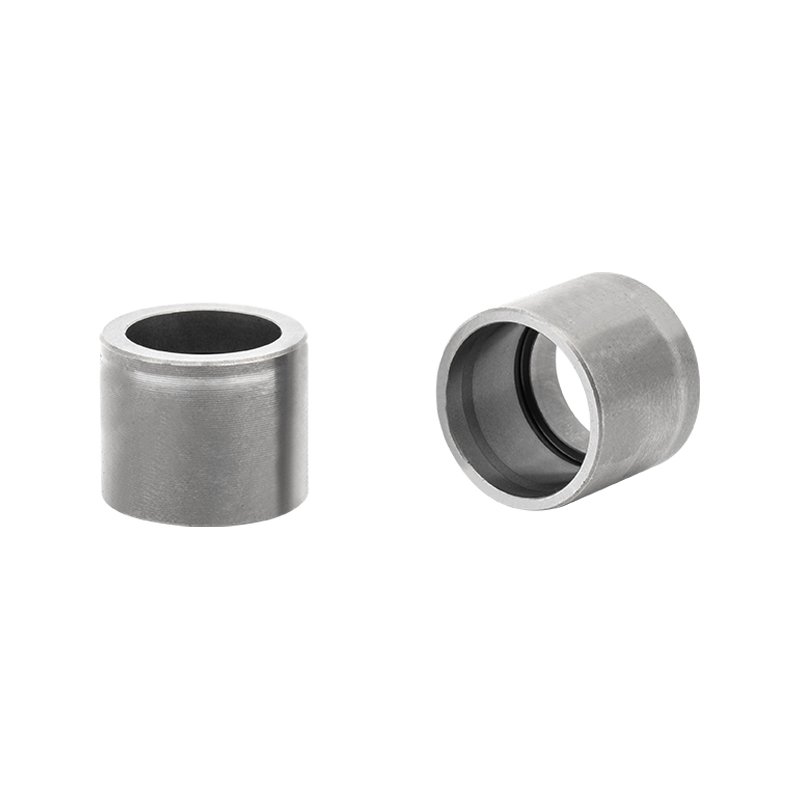
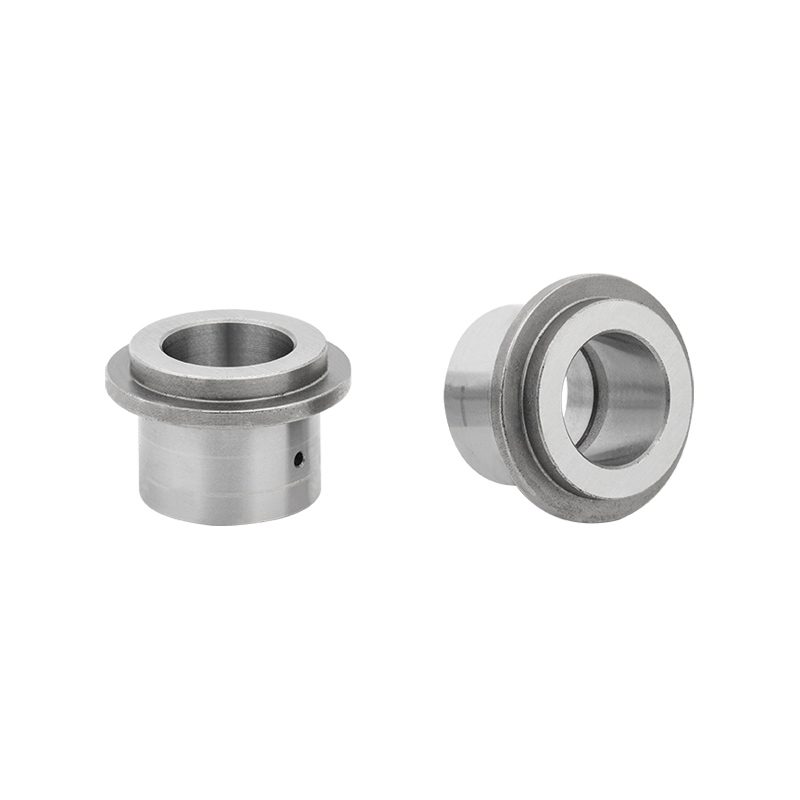

 Download Catalog
Download Catalog
